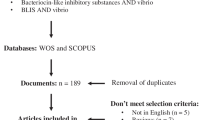Abstract
Luminous vibriosis is a shrimp disease that causes major economic losses in shrimp industry as a result of massive shrimp kills due to bacterial infection caused by Vibrio species. Use of antibiotics to control Vibrio in shrimp aquaculture is not allowed in the United States and so it is necessary to develop an alternative pathogen control method for shrimp production. Short-chain fatty acids have been used as food preservatives for a long time. Organic acids are commonly added in feeds in animal production, such as chicken, pig, and cattle. In this study, growth inhibition effects of formic acid on five selected Vibrio species, namely Vibrio alginolyticus, Vibrio cholerae, Vibrio harveyi, Vibrio parahaemolyticus and Vibrio vulnificus were studied. The Vibrio bacteria were grown on both solid and liquid media using Muller-Hinton agar and alkaline peptone water, respectively, with various concentrations of formic acid. Bacterial growth was monitored in the liquid media using optical density method. The results showed significant inhibition of growth of all five Vibrio species by formic acid at low concentration. The effective concentration (EC50) values were calculated for all five Vibrio species, which were less than 0.039% of formic acid. The results are encouraging to supplement formic acid in the shrimp feed as a control mechanism to reduce Vibrio outbreak in shrimp aquaculture system.
Similar content being viewed by others
Abbreviations
- APW:
-
alkaline peptone water
- EC50 :
-
effective concentration 50
- MHA:
-
Muller-Hinton agar
References
Anonymous. 1999. Laboratory Methods for the Diagnosis of Epidemic Dysentery and Cholera, pp. 62–72. Centers for Disease Control and Prevention. Atlanta, Georgia, USA.
Brock J.A. & LeaMaster B. 1992. A look at the principal bacterial, fungal and parasitic diseases of farmed shrimp, pp. 212–226. In: Wyban J. (ed.) Proceedings of the Special Session on Shrimp Farming. World Aquaculture Society, Baton Rouge, LA, USA.
Chaveerach P., Keuzenkamp D.A., Urlings H.A.P., Lipman L.J.A. & van Knapen F. 2002. In vitro study on the effect of organic acids on Campylobacter jenuni/coli populations in mixtures of water and feed. Poultry Sci. 81: 621–628.
Doyle M.P., Beuchat L.R. & Montville T.J. 2001. Food Microbiology: Fundamentals and Frontiers. American Society for Microbiology, Washington, D.C., 872 pp.
Franco L.D., Fondevila M., Lobera M.B. & Castrillo C. 2005. Effect of combinations of organic acids in weaned pig diets on microbial species of digestive tract contents and their response on digestibility. J. Anim. Physiol. Anim. Nutr. 89: 88–93.
Gillett R. 2008. Global Study of Shrimp Fisheries. FAO Fisheries Technical Paper, No. 475. Rome, FAO, 331 pp.
Graslund S & Bengtsson B.K. 2001. Chemicals and biological products used in south-east Asian shrimp farming, and their potential impact on the environment — a review. Sci. Total Environ. 280: 93–131.
Hernandez Serrano P. 2005. Responsible Use of Antibiotics in Aquaculture. FAO Fisheries Technical Paper, No. 469. Rome, FAO, 97 pp.
Iba A.M. & Berchieri A. 1995. Studies on the use of a formic acidpropionic acid mixture (Bio-add™) to control experimental Salmonella infection in broiler chickens. Avian Pathol. 24: 303–311.
Khan M. & Katamay M. 1969. Antagonistic effect of fatty acids against Salmonella in meat and bone meal. Appl. Microbiol. 17: 402–404.
Krieg N.R., Holt J.G., Murray R.G.E., Brenner D.J., Bryant M.P., Moulder J.W., Pfennig N., Sneath P.H.A. & Staley J.T. 1984. In: Bergey’s Manual of Systematic Bacteriology, Vol. 1, pp. 518–519. Williams & Wilkins, Baltimore, MD, USA.
Le T.X. & Munekage Y. 2004. Residues of selected antibiotics in water and mud from shrimp ponds in mangrove areas in Vietnam. Mar. Pollut. Bull. 49: 922–929.
Lightner D.V. 1996. In: A Handbook of Shrimp Pathology and Diagnostic Procedures for Disease of Cultures Penaeid Shrimp, pp. 126–145. World Aquaculture Society, Baton Rouge, LA, USA.
Lightner D.V. 2005. Biosecurity in shrimp farming: pathogen exclusion through use of SPF stock and routine surveillance. J. World Aquacult. Soc. 36: 229–248.
Lightner D.V. & McVey J.P. 1993. CRC Handbook of Mariculture, Vol. 1: Crustacean Aquaculture. CRC Press, Boca Raton, FL, USA, 420 pp.
Lueck E. 1980. Antimicrobial Food Additives. Spriger-Verlag, Berlin, Heidelberg, New York, 162 pp.
Lyle-Fritch L.P., Romero-Beltran E. & Paez-Osuna F. 2006. A survey on use of the chemical and biological products for shrimp farming in Sinaloa, NW Mexico. Aquacult. Eng. 35: 135–146.
O’Bryen P.J. & Lee C. 2003. Discussion summary on biosecurity in aquaculture production systems: exclusion of pathogens and other undesirables, pp. 275–293. The World Aquaculture Society, Baton Rouge, LA USA.
Saarikoski J. & Vilukseta M. 1981. Influence of pH on the toxicity of substituted phenols to fish. Arch. Environ. Contam. Toxicol. 10: 747–753.
Saori M. & Boopathy R. 2011. Effect of organic acids on shrimp pathogen, Vibrio harveyi. Curr. Microbiol. 63: 1–7.
Tanaka Y., Kimura B., Takahashi H., Watanabe T., Obata H., Kai A., Morozumi S. & Fuji T. 2008. Lysine decarboxylase of Vibrio parahaemolyticus: kinetics of transcription and role in acid resistance. J. Appl. Microbiol. 104: 1283–1293.
Verschuere L., Rombaut G., Sorgeloos P. & Verstraete W. 2000. Probiotic bacteria as biological control agents in aquaculture. Microbiol. Mol. Biol. Rev. 64: 655–671.
Author information
Authors and Affiliations
Corresponding author
Additional information
Based on a contribution presented at the International Conference on Industrial Biotechnology (ICIB-2012), November 21–23, 2012, Punjabi University, Patiala (Pb.), India
Rights and permissions
About this article
Cite this article
Adams, D., Boopathy, R. Use of formic acid to control vibriosis in shrimp aquaculture. Biologia 68, 1017–1021 (2013). https://doi.org/10.2478/s11756-013-0251-x
Received:
Accepted:
Published:
Issue Date:
DOI: https://doi.org/10.2478/s11756-013-0251-x




